The following list the seed research projects from 2014 to 2017.
SEED 1
CHEMICALLY MODIFIED CARBON CATHODES OF HIGH CAPACITY LI-O2 BATTERIES
Yogesh Surendranath, Assistant Professor, Department of Chemistry
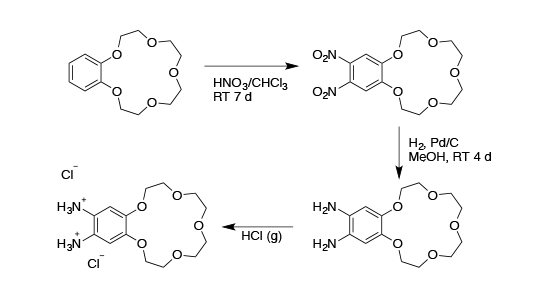 Figure 1: Synthetic pathway for preparing diamine-functionalized crown ethers for use in surface modification
Figure 1: Synthetic pathway for preparing diamine-functionalized crown ethers for use in surface modification
Li-O2 batteries are poised to transform the consumer electronic and electric vehicle markets because they possess a theoretical energy density of 3,213 W h/kg, three fold larger than the current state of the art. This dramatic boost in energy density is provided by the carbon-based Li-O2 cathode, at which O2 is reduced to Li2O2 upon cell discharge. However, the insoluble Li2O2 precipitates indiscriminately on the surface of the carbon cathode, inhibiting subsequent reduction of O2, leading to diminished capacity, poor rate capability, and poor round-trip efficiency. These challenges could be overcome if the surfaces of carbon cathodes can be modified to discourage the indiscriminate nucleation and growth of Li2O2 crystallites. We hypothesize that Li2O2 nucleation occurs via Li+ coordination to oxidic surface functionalities including ketones, carboxylic acids, and alcohols, which are known to be prevalent on carbon surfaces. Thus, we will apply well-known oxygen protecting group (PG) chemistries (e.g. silylation, benzylation, alkylation) to carbon electrodes to impede the nucleation of Li2O2 crystallites. By reducing the nucleation site density, fewer, larger Li2O2 crystallites will be favored, leaving the majority of the electrode surface available to sustain rapid O2 reduction, thereby, enabling high energy and power densities.
Kaminsky, C. J., Wright, J., and Surendranath, Y. “Graphite-Conjugation Enhances Porphyrin Electrocatalysis.” ACS Catalysis, 9(4): 3667–3671, 2019. <DOI:10.1021/acscatal.9b00404>
SEED 2
INTERFACE ENGINEERING OF SILICON-OXIDE CORE-SHELL NANORODS FOR HIGH-EFFICIENCY WATER SPLITTING PHOTOCATALYSTS
PI: Alexie M. Kolpak, Department of Mechanical Engineering
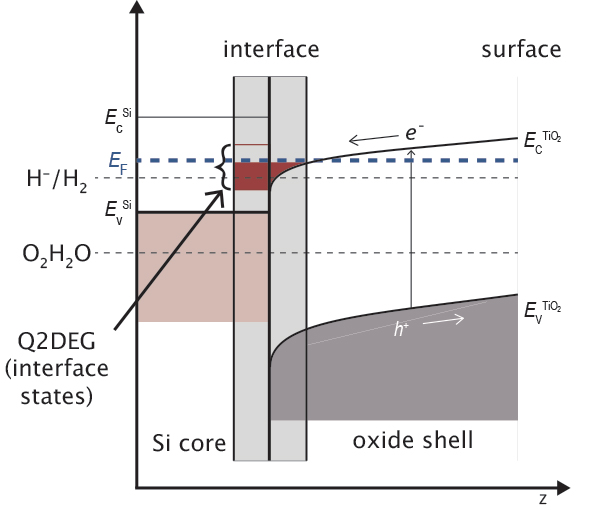 Figure 1. Schematic band alignment
Figure 1. Schematic band alignment
Photocatalytic water splitting using solar energy is a promising process for renewable hydrogen production, but a better conversion efficiency is needed to make it economically viable. This requires new materials with optimized band alignment, visible light absorption, exciton separation, electron and hole carrier mobility, hydrogen and oxygen evolution activity, and photo-corrosion resistance. In this work, ab initio computations are used to investigate the properties of Si-TiO2 core-shell nanorods as candidates for optimizing these key metrics. The figure above illustrates the conceptual approach, which take advantage of (a) nanoscale geometry to orthogonalize light absorption and carrier separation; (b) the known resistance of TiO2 to photo-corrosion in water; and (c) the potential ability to modify synthesis conditions to engineer the interfacial stoichiometry.
In the first six months of the project, the thermodynamic stability and electronic properties of Si-TiO2 interfaces with varying stoichiometry were investigated using density functional theory. In the next six months, the effect of these stable interfaces on catalytic activity was investigated. Although a variety of OER reaction mechanisms are possible, most studies assume a particular mechanism (the AEM, or adsorbate evolution mechanism). In this work, numerous mechanisms, including a new lattice oxygen-mediated mechanism identified by the PIs group to occur on some perovskite oxide surfaces, were computed for unstrained anatase TiO2, strained anatase TiO2, and the predicted Si-TiO2 interface identified in the first part of this work. A new reaction mechanism was identified (Figure 2A). Furthermore, the Si-supported TiO2 thin film was shown to have a substantially lower overpotential for OER compared to anatase TiO2 thin films without Si due to the interface-induced potential drop across the TiO2, which decreases the binding energy of the –OOH OER intermediate.
Park, K.-W. and Kolpak, A. “Photocatalytic Hydrogen Evolution Activity of Co/CoO Hybrid Structures: A First-Principle Study on Co Layer Thickness Effect.” Journal of Materials Chemistry A, 2019. <DOI:10.1039/c9ta04508b>
Park, K.-W. and Kolpak, A. M. “Mechanism for Spontaneous Oxygen and Hydrogen Evolution Reactions on CoO Nanoparticles.” Journal of Materials Chemistry A, 7(12): 6708–6719, 2019. <DOI:10.1039/c8ta11087e>
Park, K.W. and Kolpak, A.M. "Understanding photocatalytic overall water splitting on CoO nanoparticles: Effects of facets, surface stoichiometry, and the CoO/water interface." Journal of Catlysis, 365: 115-124, September 2018. <DOI: 10.1016/j.jcat.2018.06.021>
SEED 3
SINGLE CRYSTAL STUDY OF ELECTRONIC TOPOLOGY AND CORRELATION
Joe Checkelsky, Assistant Professor, Department of Physics
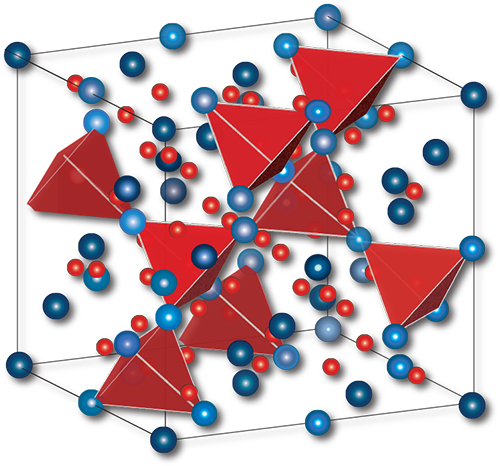
A relatively unexplored parameter in topological insulators is electronic correlation. Motivated by the metal-insulator transition observed in the pyrochlore iridates R2Ir2O7 (R is a rare earth) it has been suggested that a combination of weak to moderate correlation effects and large spin-orbit interaction may exist that could give rise to new topologically non-trivial electronic states. In particular, it is expected that this compound’s principle bulk excitations may be described by a 3-dimensional analog of graphene known as a Weyl semimetal with helical excitations in all 3 dimensions with a several exotic and potentially useful properties. Despite these sharp theoretical predictions, the experimental situation is unsettled owing largely to the difficulty in producing single crystal specimens. While optical furnace techniques used for other pyrochlores have thus far proven unsuccessful in producing single crystals, we propose to extend a flux technique reported for R=Eu and Pr across this series to develop high quality single crystals and perform incisive studies of the magnetic transition and transport properties of the electronic ground state. If successful, this study would open the door for other optical and scattering experiments as well as extensions to Os oxides and spinel candidate compounds.
SEED 4
DIRECT DEPOSITION OF CATALYSTS ON POROUS METALLIC FOAMS FOR EFFICIENT CO2 ELECTROREDUCTION
Fikile R. Brushett, Assistant Professor, Department of Chemical Engineering
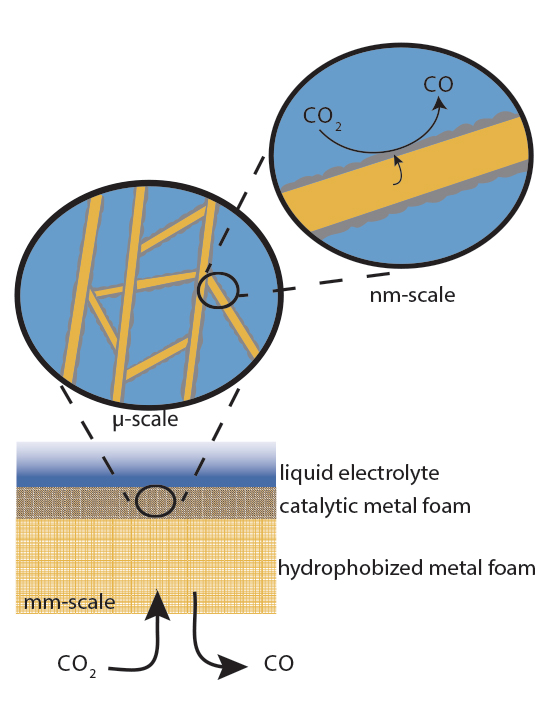
The development of energy efficient carbon dioxide (CO2) electroreduction processes would simultaneously curb anthropogenic CO2 emissions and provide sustainable pathways for fuel generation. While significant efforts have focused on heterogeneous CO2 electroreduction to products such as carbon monoxide, formic acid, and methanol; no process has been able to demonstrate both high energetic efficiencies (≥ 60-70%) and high current densities (≥ 150 mA/cm2). A key challenge is translating our investment in performance nanomaterials to meso- and microarchitectures within electrochemical cells under realistic operating conditions. Here we propose to develop microporous metal foam electrodes with nanostructured electrocatalysts directly deposited onto the foam surface for high-performance CO2 conversion. Metal foams hold two key advantages: 1) their porous nature facilitates extended tunable electrochemical interfaces without sacrificing transport of reactants and ions; and 2) they can act as a conductive substrate for the direct deposition of highly-active surface alloys eliminating the need for conductive additives and binders (which may degrade or promote side reactions). We will focus on CO-selective catalysts (e.g ., Ag, Au) as this represents the simplest CO2 conversion reaction and has been demonstrated at moderate efficiencies (albeit at low currents). Direct deposition enables ground-up construction of nanostructures using bath conditions (e.g. composition), delivery mechanism (e.g., diffusive, convective), and applied potential (for electrodeposition) as tools to control structure, phase, and surface characteristics. We will systematically investigate the structure-activity-stability relationships of the deposited catalysts and electrodes using electroanalytical and physical characterization techniques. Of particular interest will be catalysts deposited under transport limiting conditions (desirable for high-throughput manufacturing) and catalyst-substrate interactions (determines durability). The success of this project would enable efficient CO production at the large-scale which, when coupled with hydrogen generation from renewables enables the carbon-neutral synthesis gas production needed to generate liquid fuels for heavy duty transportation applications.
Highlight
Direct Deposition of Catalysts on Porous Metallic Foams for Efficient CO2 Electroreduction
MAGNETICALLY AND OPTICALLY DRIVEN TOPOLOGICAL SEMIMETALS
Liang Fu, Nuh Gedik, and Joseph Checkelsky, Department of Physics
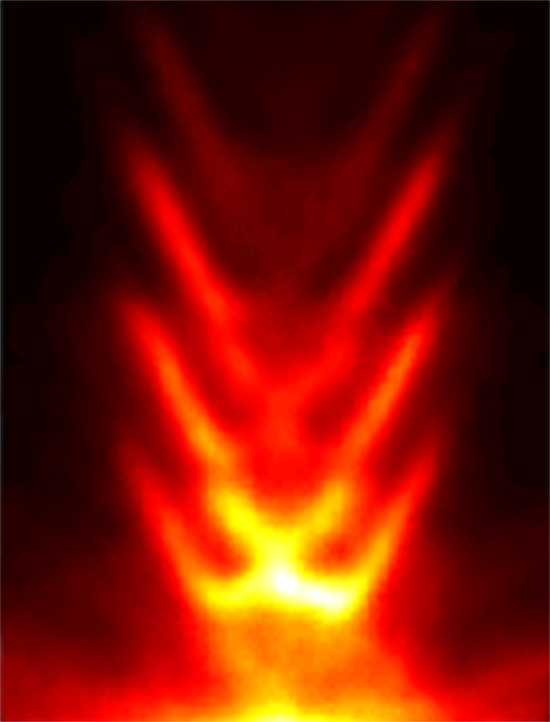
The goal of this research is to discover two new types of TSMs in magnetic and photo-driven systems respectively, and explore their novel properties. First, magnetic TSMs consist of itinerant electrons that form the Dirac/Weyl point in k-space and localized moment that generates magnetism. The exchange coupling between the two is expected to catalyze a plethora of novel correlated phenomena, including an anomalous Hall effect induced by Berry curvature, an axion electromagnetic response, tunable Weyl point creation/annihilation, and metal-insulator transitions. Despite intensive searches, magnetic TSMs have not been experimentally found. The PIs will combine theoretical and experimental efforts to search for magnetic TSMs in correlated electron systems.
Second, the PIs propose a new topological phase of matter in photon-electron hybrid states, which we term the Floquet topological semimetal. Recent experiments lead by the PI Gedik has demonstrated that Bloch states in solids can be “dressed” by intense laser light, forming “Floquet-Bloch states” that are completely coherent and behave like real bands. When these states form topologically robust band crossings in energy-momentum space, the photo-excited system is expected to become a Floquet topological semimetal. The PI Fu will theoretically determine the photon polarization and frequency required for this new phase, while Checkelsky will provide the necessary materials platform and Gedik use well-established time resolved photoemission techniques to uncover these Floquet TSMs.
I. Magnetic Topological Semimetals
An important class of TSMs, known as Weyl semimetals, is proposed to materialize in magnetic topological insulators, where time-reversal symmetry is spontaneously broken. Fu’s group will use first-principles calculations to identify such magnetically driven TSMs in candidate materials and predict their emergent phenomena. Checkelsky’s group will synthesize samples and characterize their transport and magnetic properties, which will then be studied by Gedik’s group using angle-resolved photoemission spectroscopy (ARPES) to directly observe the Dirac/Weyl point in the bulk and the topological surface states with Fermi arc. Gedik’s group will further perform optical and magneto-optical measurements to thoroughly characterize the electronic structure. In addition to its scientific value, the discovery of TSMs may enable new spintronic device application, where electrical properties can be efficiently tuned by magnetization.
II. Floquet Topological Semimetals
Besides the static optical and photoemission measurements probing the equilibrium, Gedik will also study the dynamics of the material in response to photoexcitation by light. Gedik has recently showed that by shining light with energy below the bulk band gap of a topological insulator, hybrid photon-electron states can be created. These states are called Floquet-Bloch states, which are the Bloch states “dressed” by the intense laser light. Surface electrons coherently can emit and absorb multiple laser photons giving rise to replicas of the original dispersion separated by integer multiples of photon energy. These new states are completely coherent and behave like real bands for practical purposes. When these bands cross they can hybridize and open up band gaps along certain directions. Considering the fact that material properties are largely determined by electronic dispersion, this ability to manipulate the electronic band structure with light is a novel way to engineer novel quantum phases of matter. There have been a number of proposals for inducing phase transitions using Floquet methods, such as inducing a Floquet topological insulator from a trivial insulator.
HIGHLIGHTS
New Candidate for Optically Induced Topological Semimetals
PUBLICATIONS
2019
Liu, J., Fang, C., and Fu, L. “Tunable Weyl Fermions and Fermi Arcs in Magnetized Topological Crystalline Insulators.” Chinese Physics, B 28(4): 047301, 2019. <DOI:10.1088/1674-1056/28/4/047301>
2017
Han, J.H., Richardella, A., Siddiqui, S.A., Finley, J., Samarth, N., and Liu, L.Q. “Room-Temperature Spin-Orbit Torque Switching Induced by a Topological Insulator.” Physical Review Letters, 119(7): Article 077702, December 2017. DOI: 10.1103/PhysRevLett.119.077702
Liu, J.W., Wang, H., Fang, C., Fu, L., and Qian, X.F. “van der Waals stacking-induced topological phase transition in layered ternary transition metal chalcogenides.” Nano Letters, 17(1): 467-475, January 2017. DOI: 10.1021/acs.nanolett.6b04487
Ma, Q., Xu, S.Y., Chan, C.K., Zhang, C.L., Chang, G.Q., Lin, Y.X., Xie, W.W., Palacios, T., Lin, H., Jia, S., Lee, P.A., Jarillo-Herrero, P., and Gedik, N. “Direct optical detection of Weyl fermion chirality in a topological semimetal.” Nature Physics, 13(9): 842+, September 2017. DOI: 10.1038/NPHYS4146
2016
Fang, C. Lu, L., Liu, J., and Fu, L. “Topological semimetals with helicoid surface states.” Nature Physics: 1745-2481, June 2016. DOI: 10.1038/nphys3782
Isobe, H and Fu, L. “Quantum critical points of j=3/2 Dirac electrons in antiperovskite topological crystalline insulators.” Physical Review B, 93(24): Article 241113, June 2016. DOI: 10.1103/PhysRevB.93.241113
